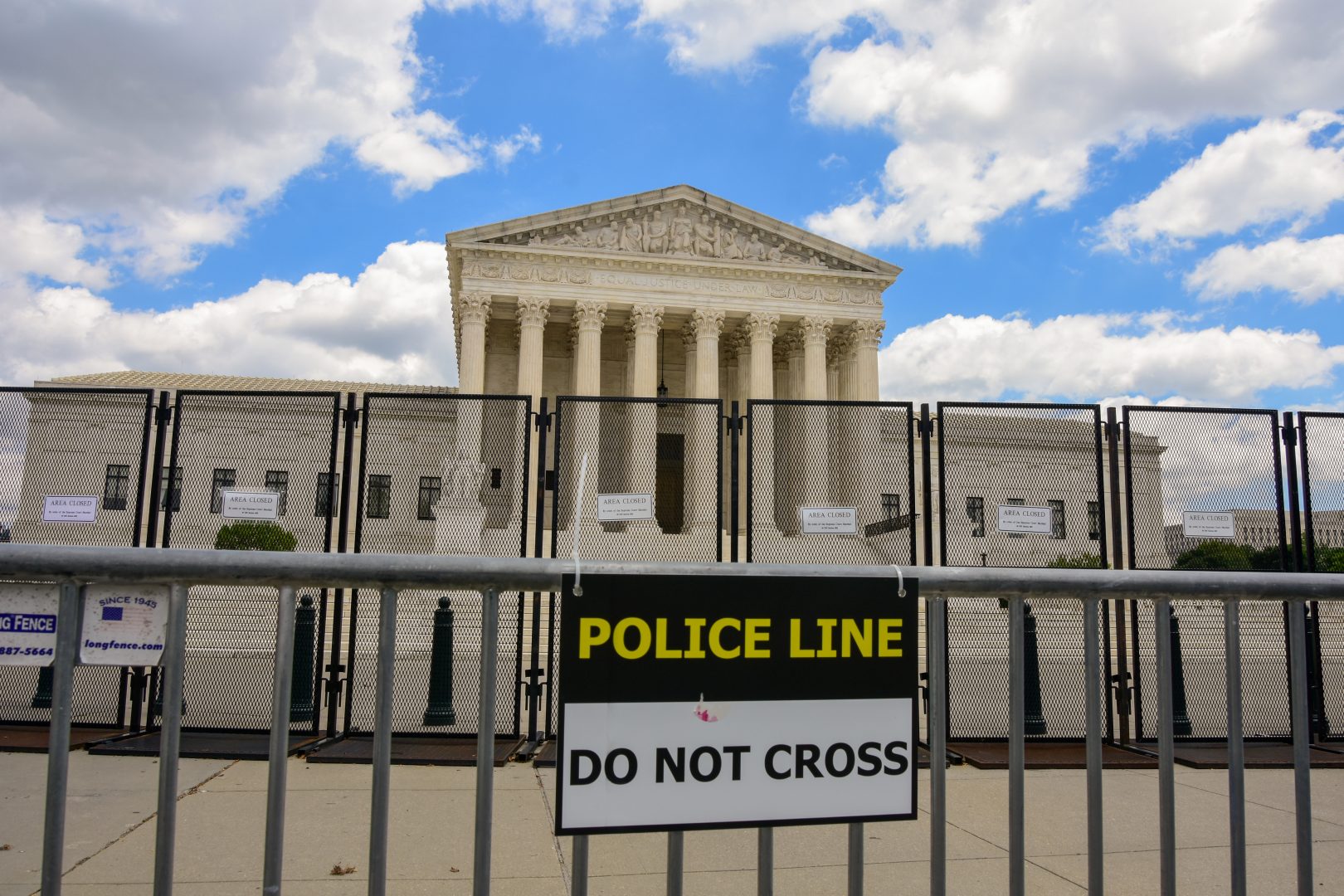
Security fencing surrounds the U.S. Supreme Court building on Capitol Hill in Washington, DC.

Security fencing surrounds the U.S. Supreme Court building on Capitol Hill in Washington, DC.

Security fencing surrounds the U.S. Supreme Court building on Capitol Hill in Washington, DC.
Airdate: Wednesday, June 22, 2022
Violence and threats of violence against public officials have become more commonplace in recent years.
The U.S. Capitol Building was enclosed with more secure fences and security after the January 6th attack. Election administrators across the country have been threatened often since the 2020 presidential election. The U.S. Supreme Court building also is fenced in in anticipation of a decision on abortion or other rulings that could lead to massive protests or crowds.
Something else that didn’t happen often before but is now is protests occurring at officials’ private homes. Sometimes, it goes beyond protesting.
Two weeks ago, an armed California man was arrested outside the Maryland home of Supreme Court Justice Brett Kavanaugh and charged with attempted murder.
Legislation was approved to provide more security for justices but threats against judges aren’t new.
Dickinson College President John Jones is a former Federal Court Judge and was appointed by Supreme Court Chief Justice John Roberts to the Committee on Judicial Security. Judge Jones appears on Wednesday’s Smart Talk.
The days of journalism’s one-way street of simply producing stories for the public have long been over. Now, it’s time to find better ways to interact with you and ensure we meet your high standards of what a credible media organization should be.